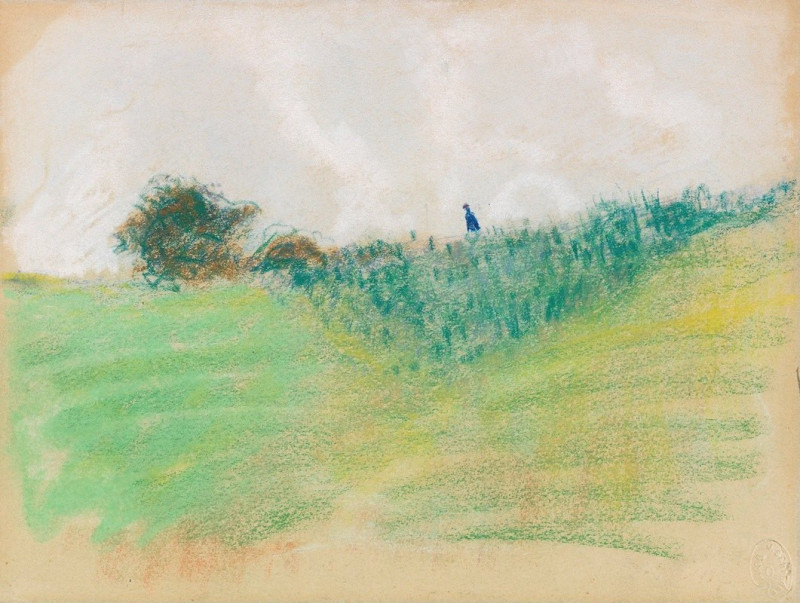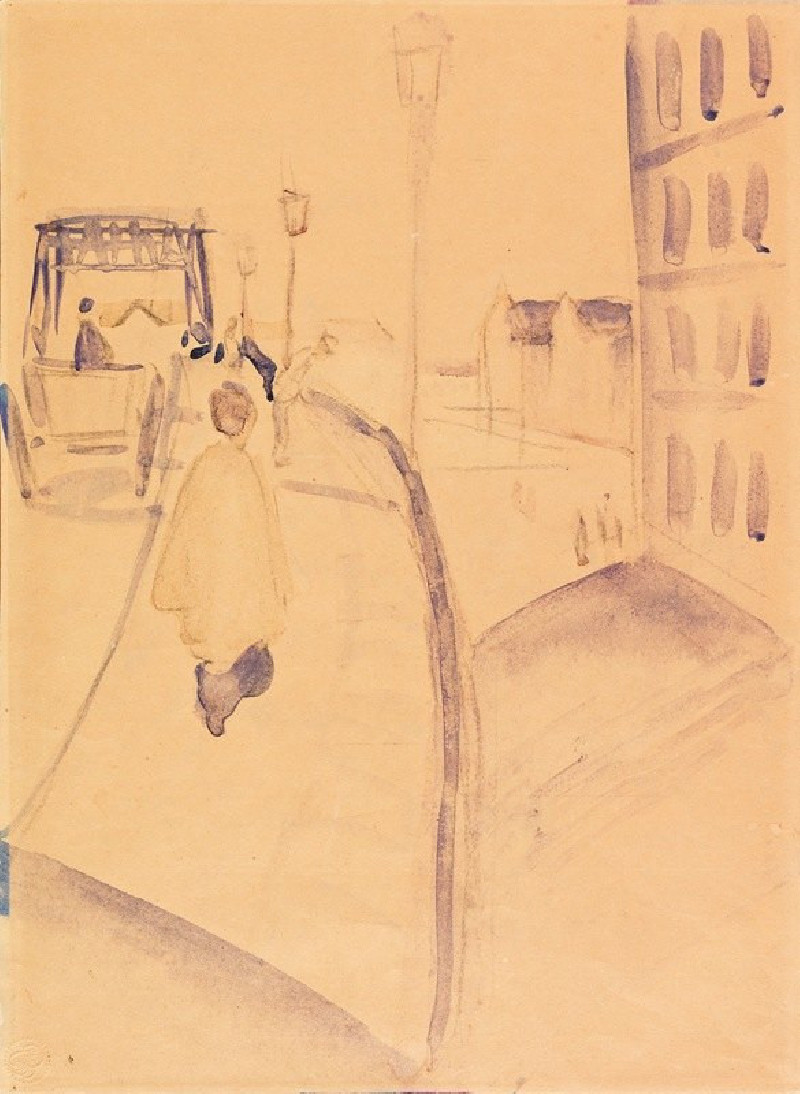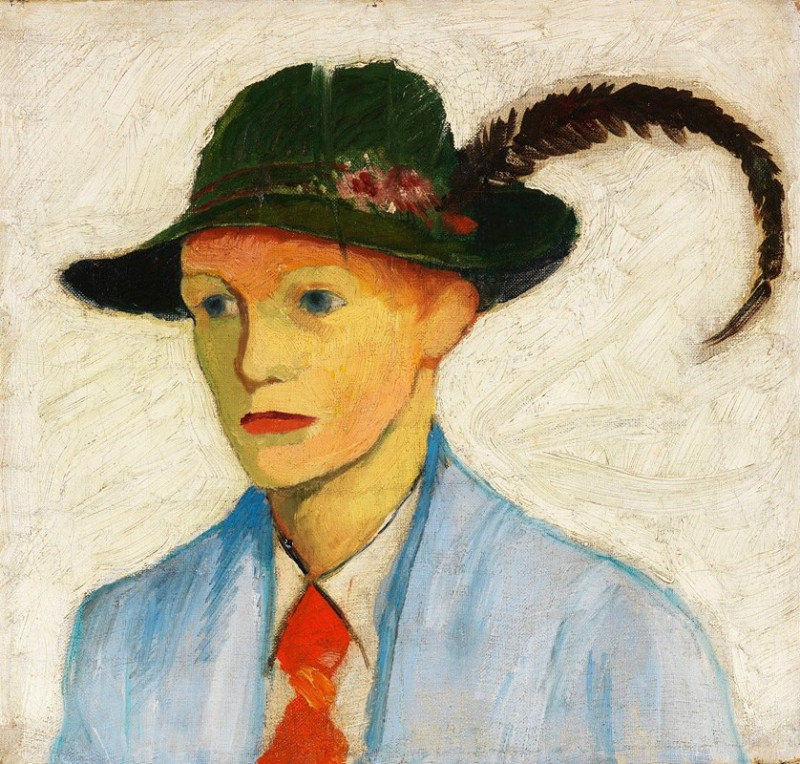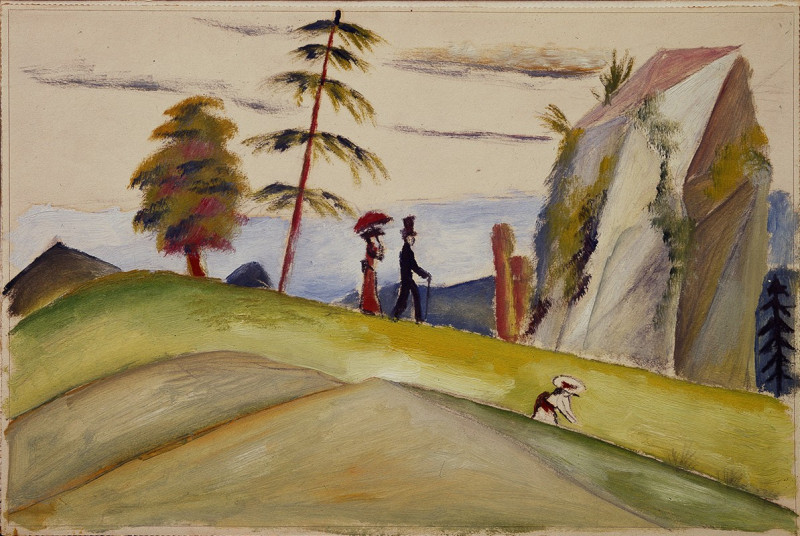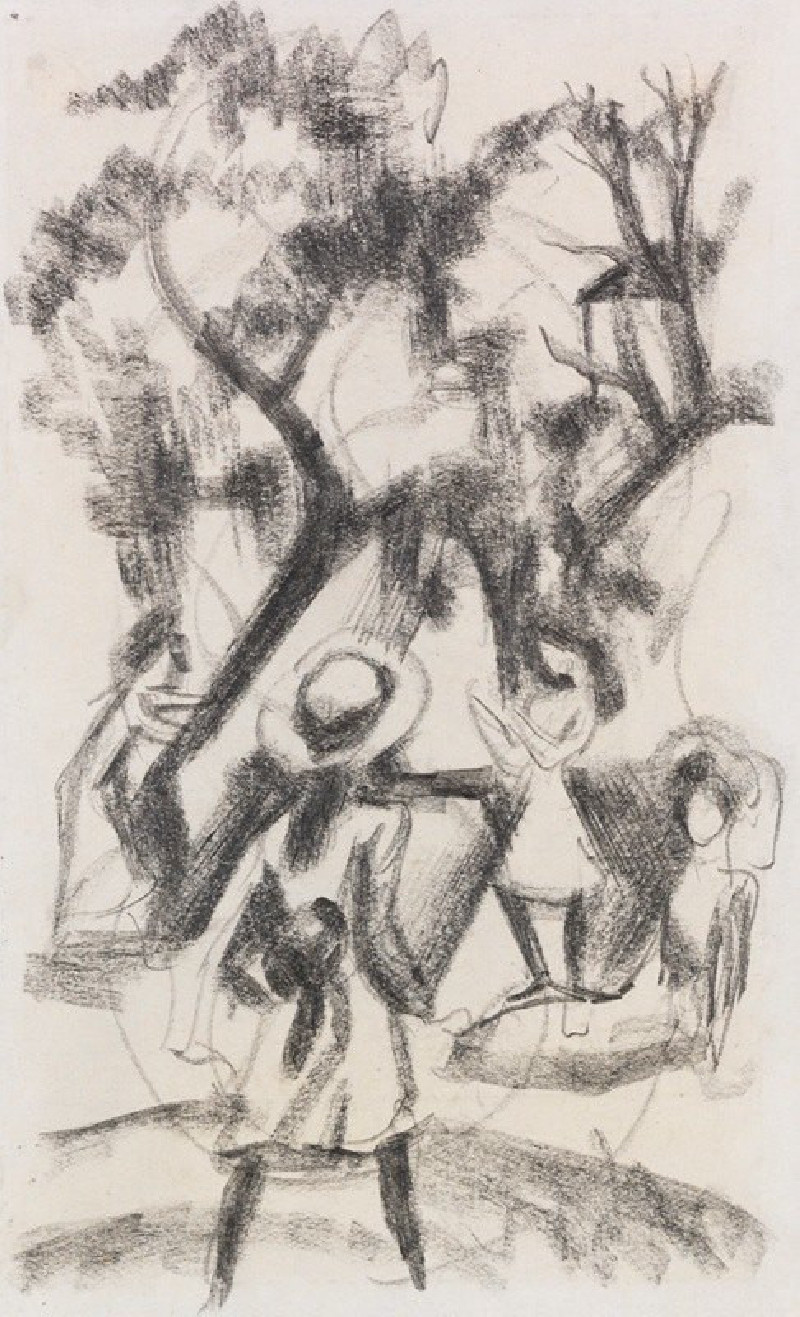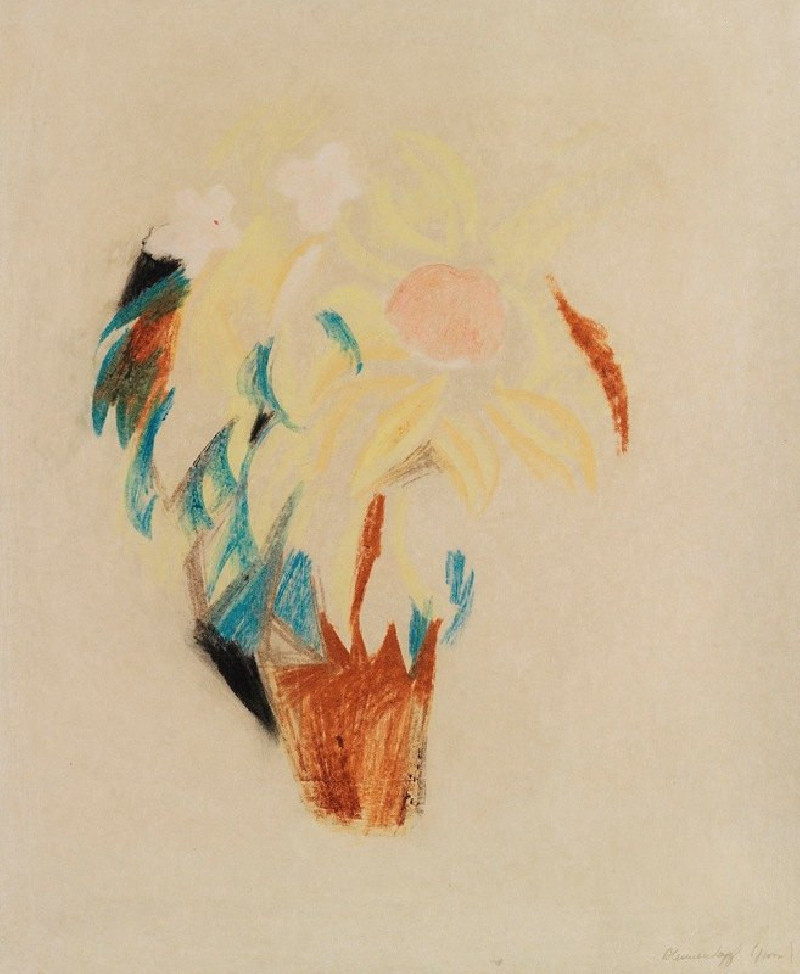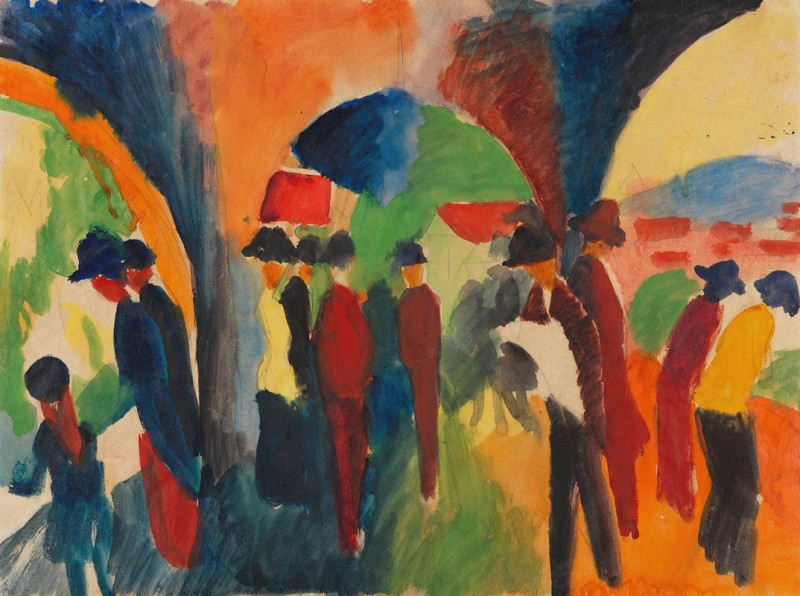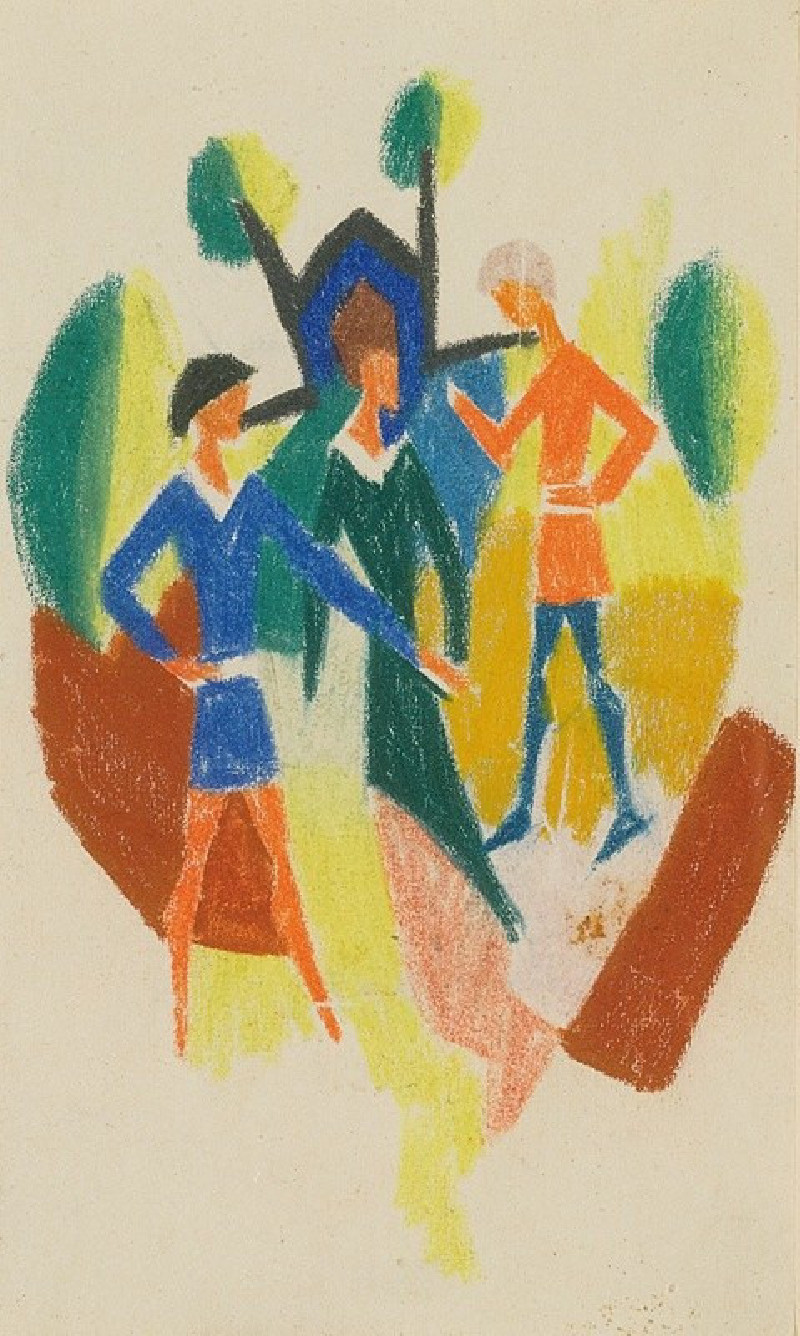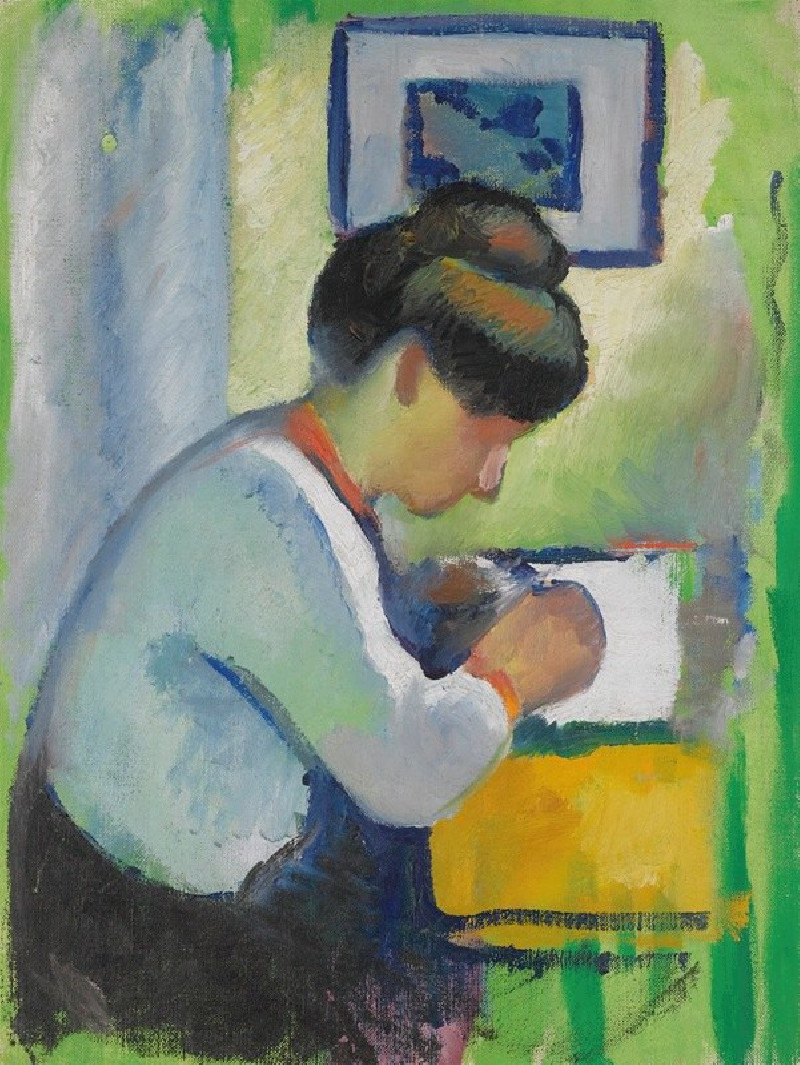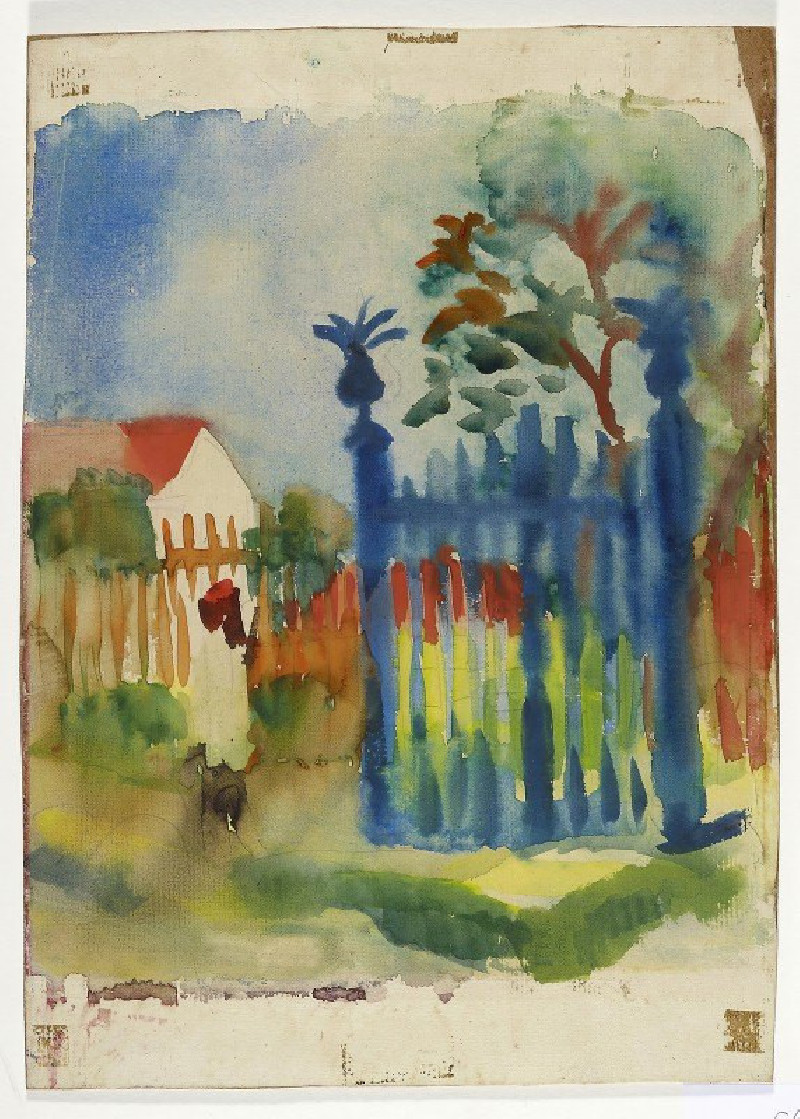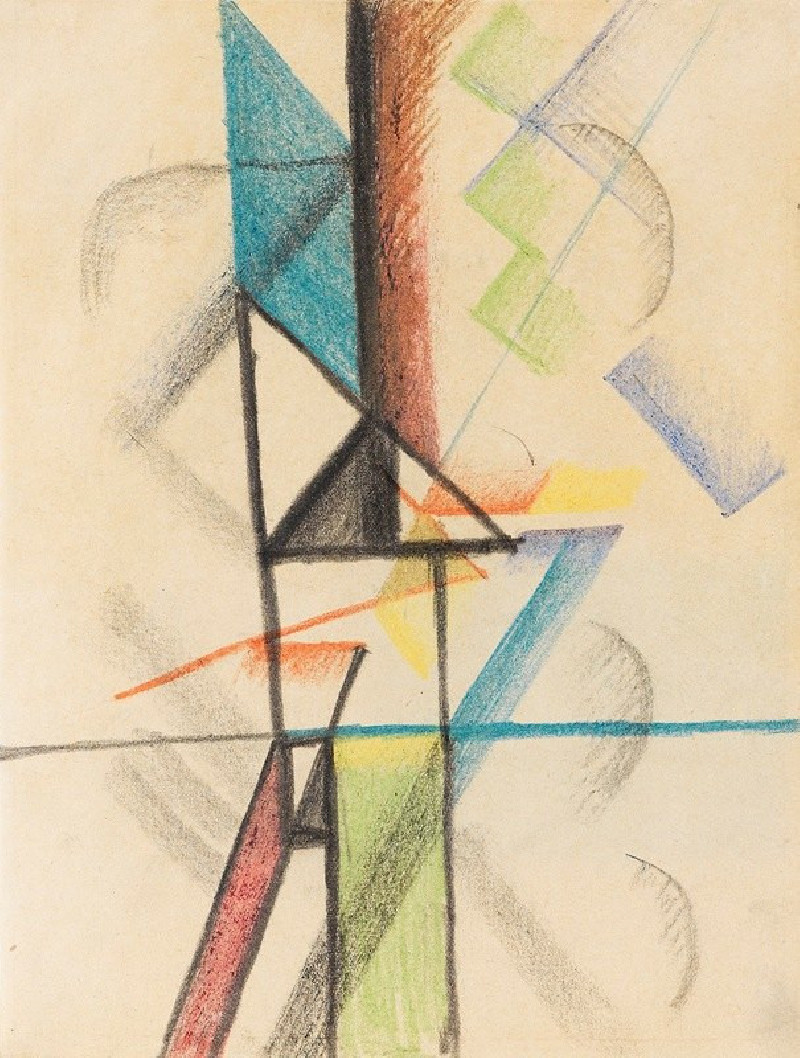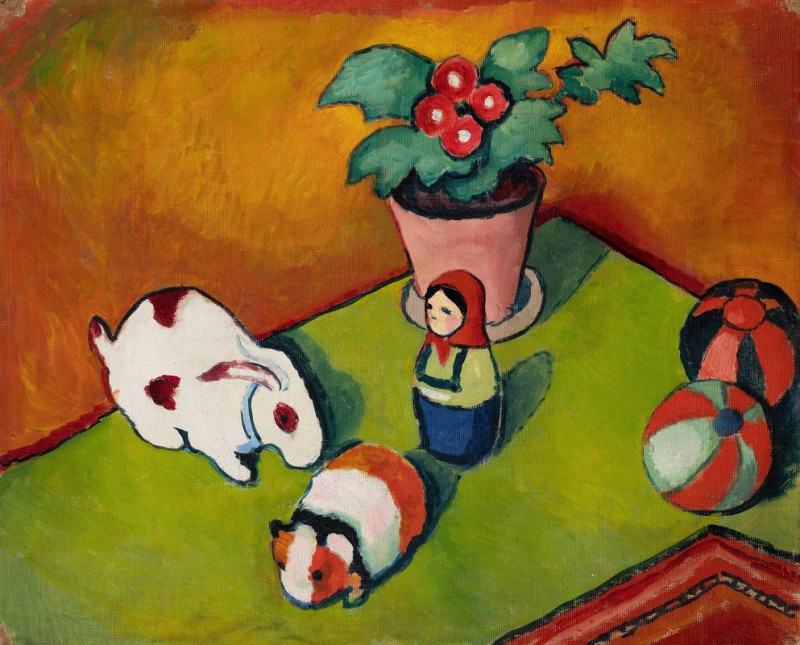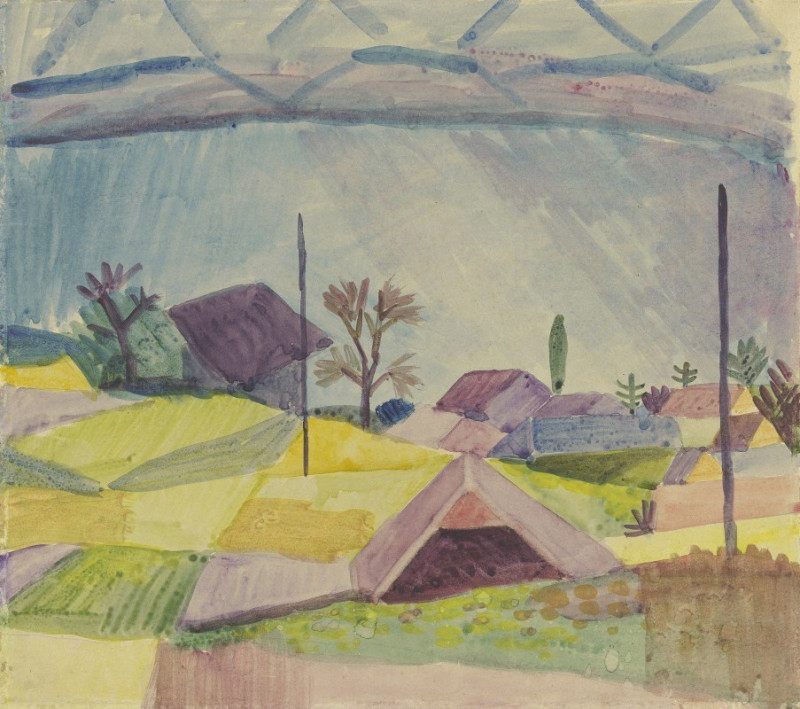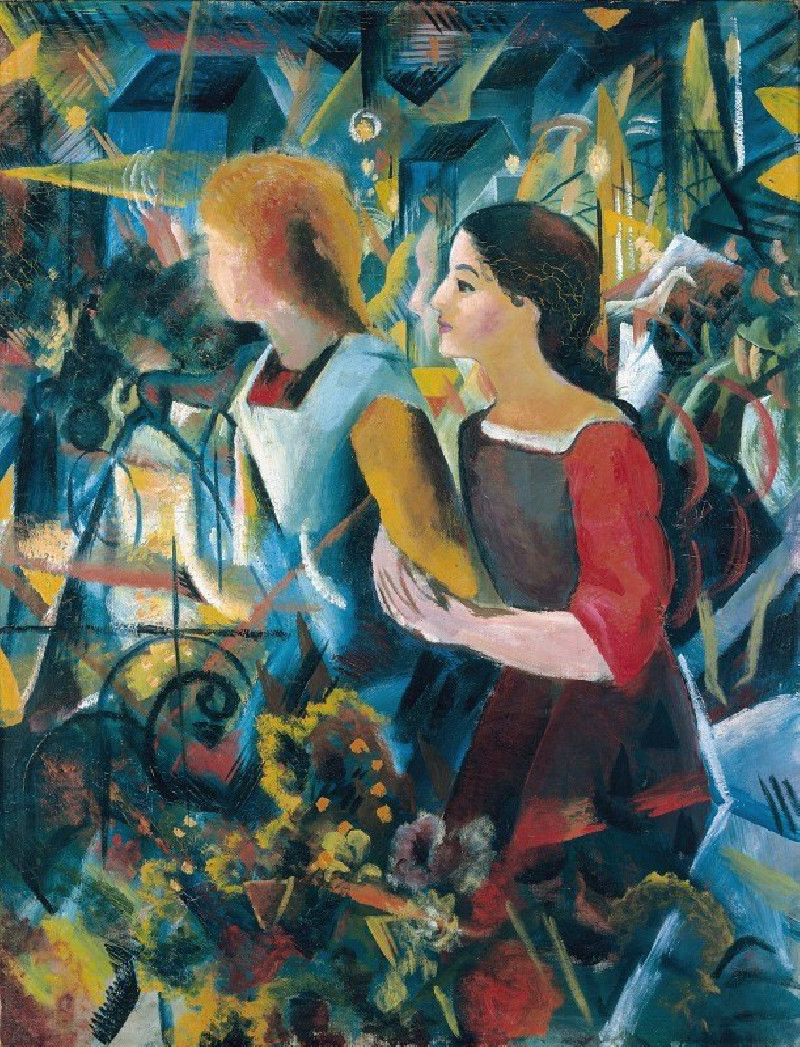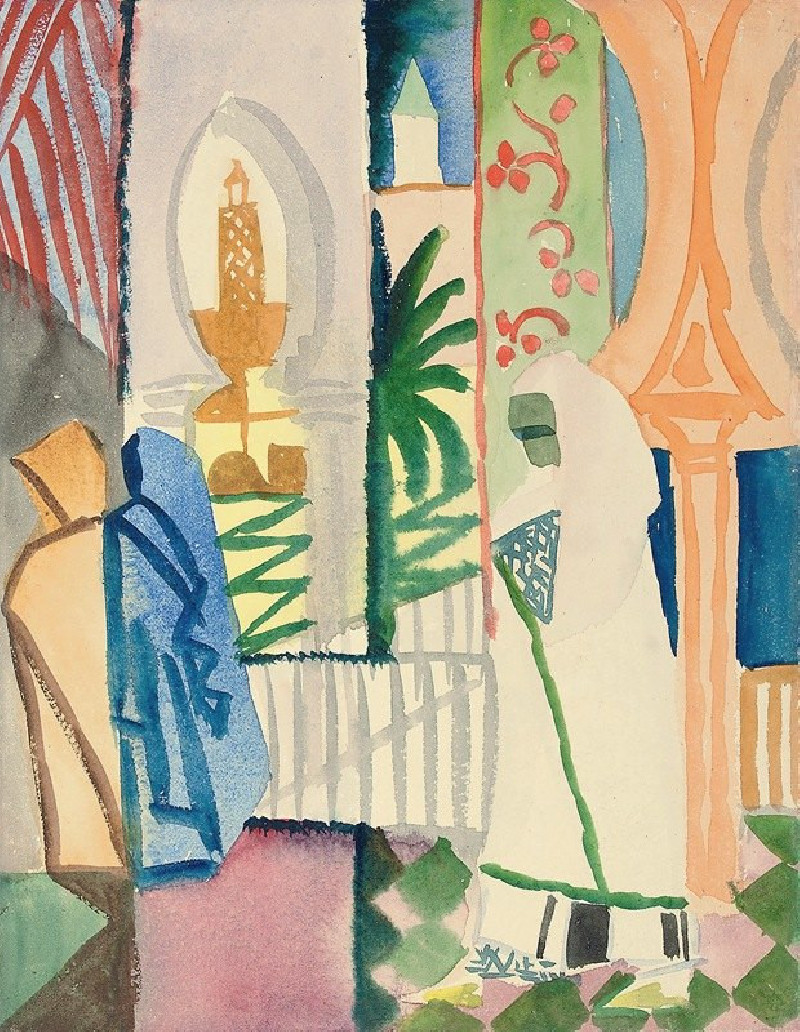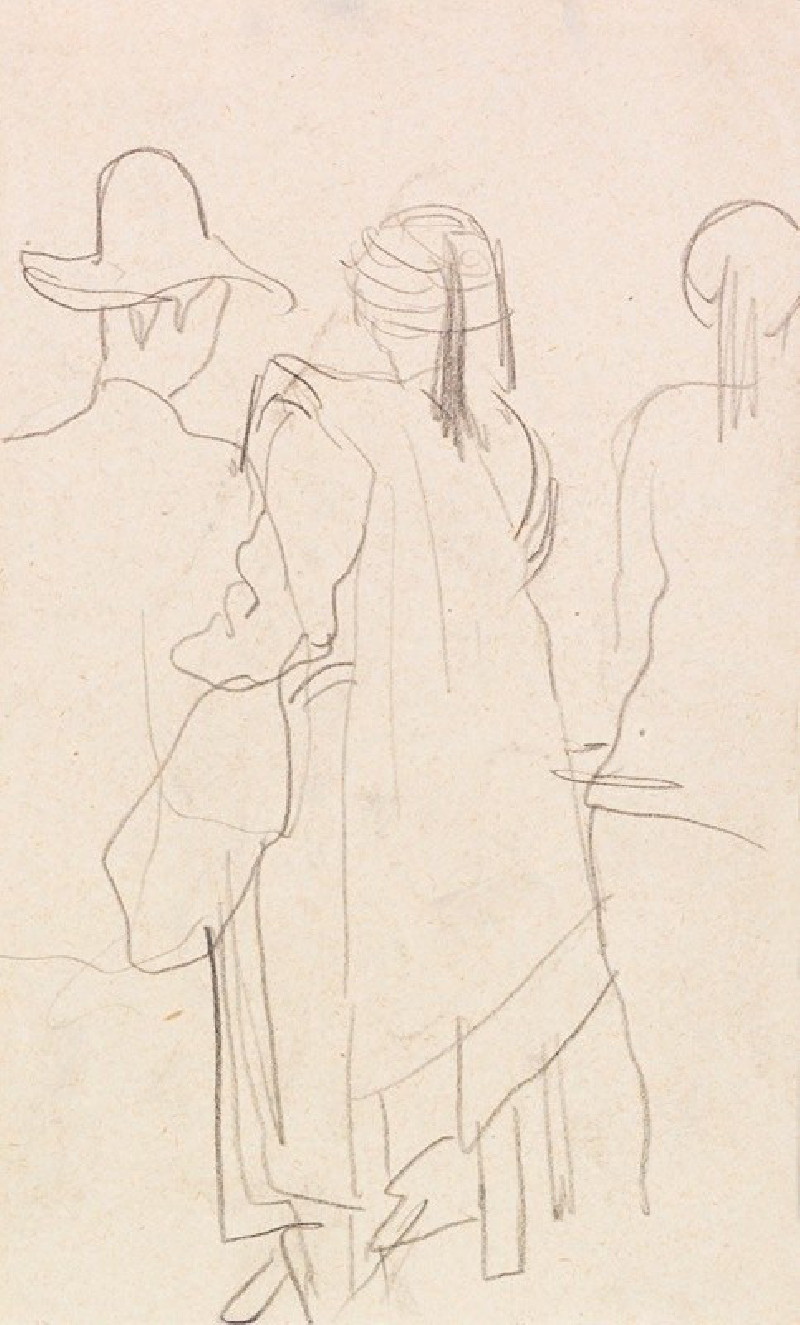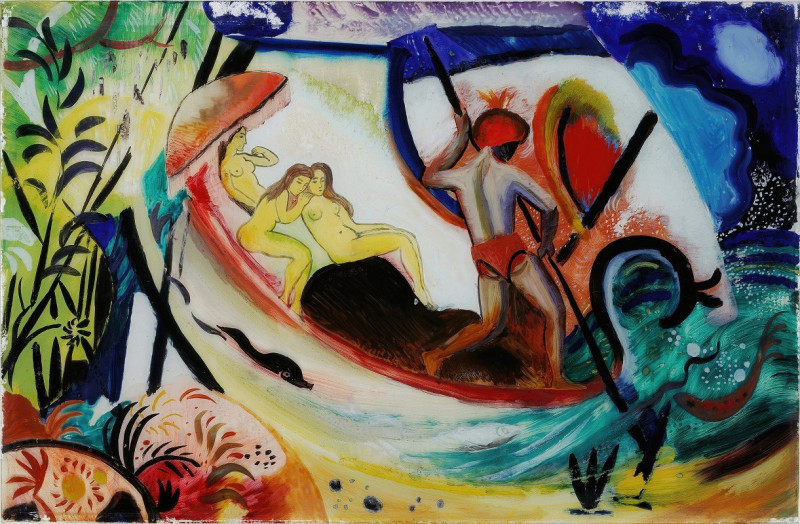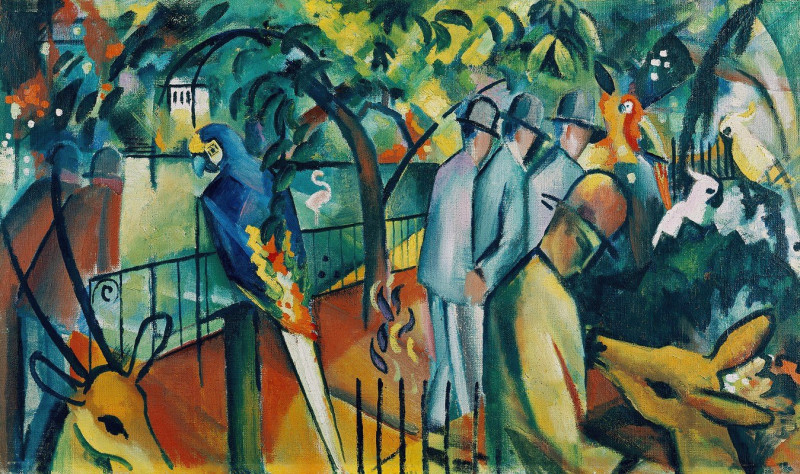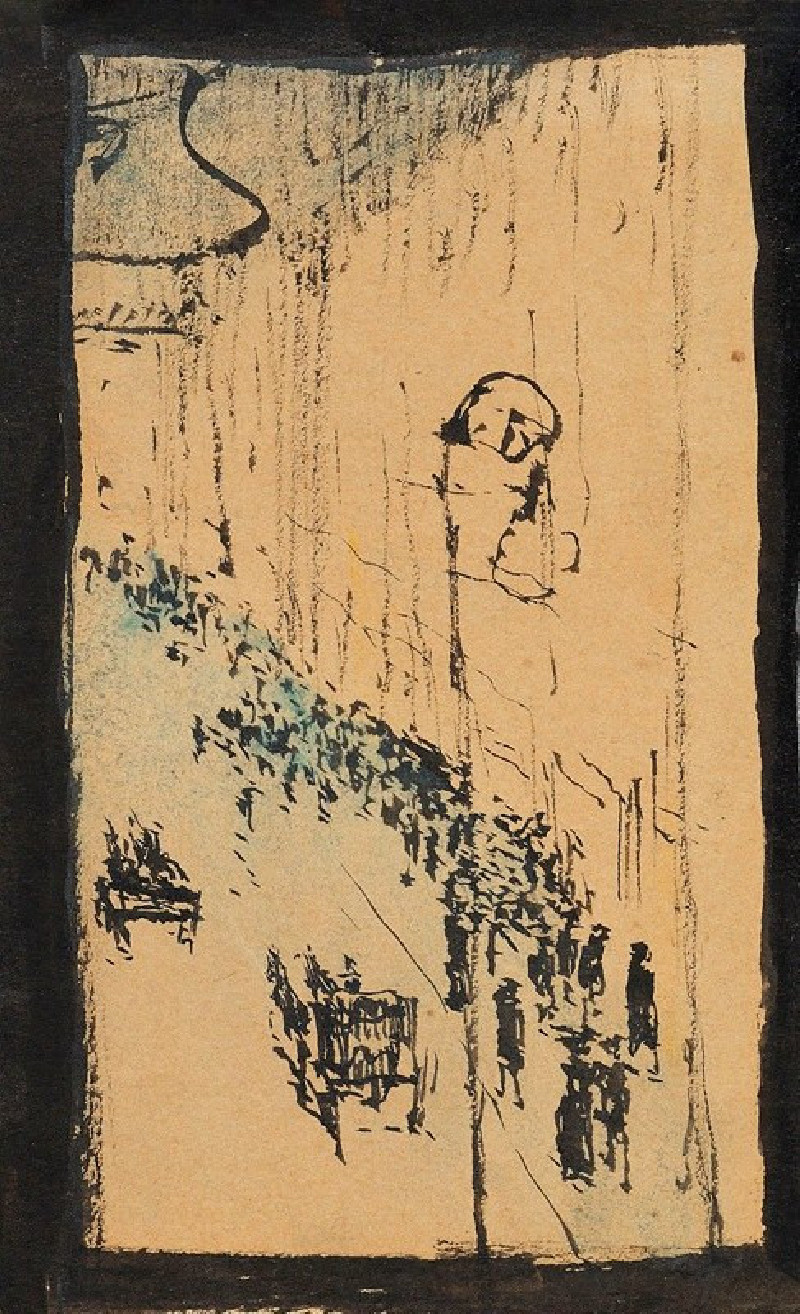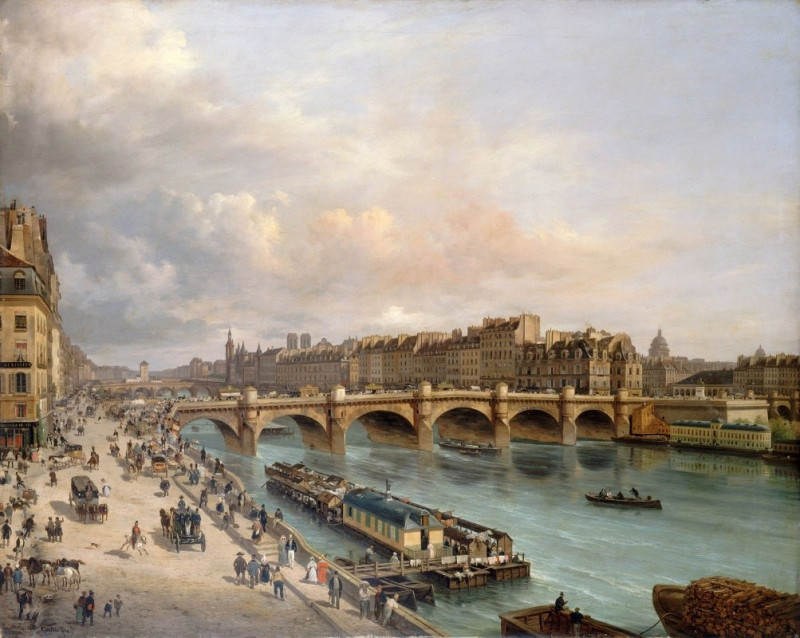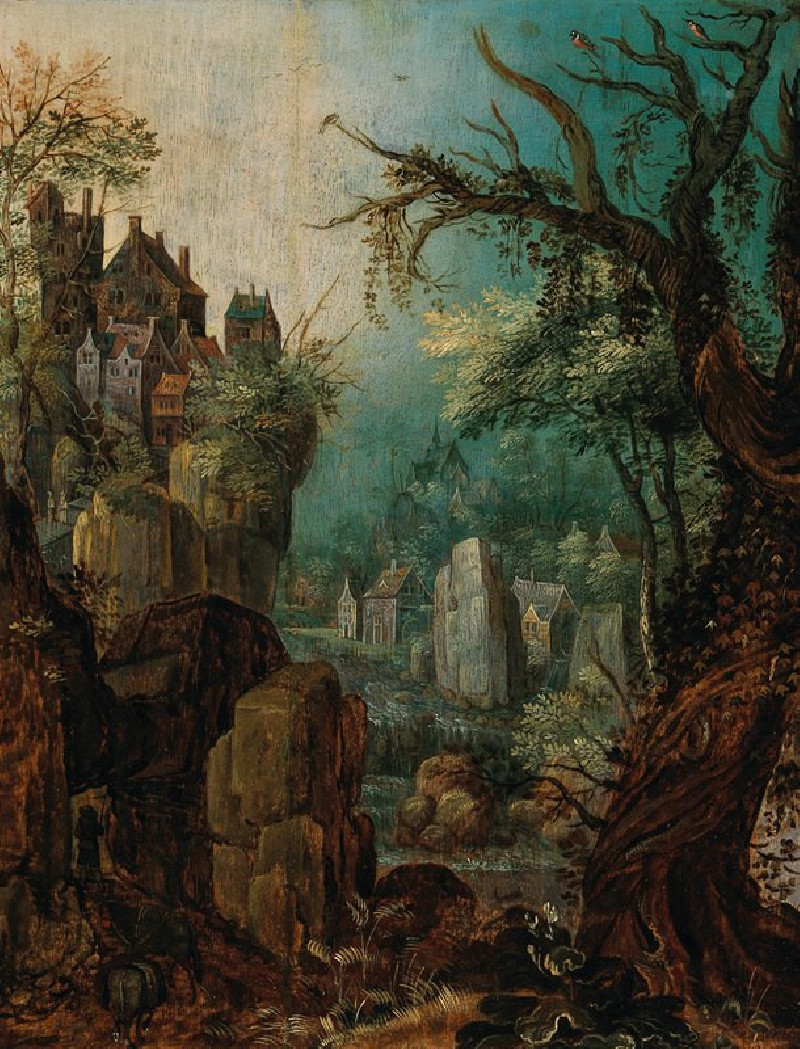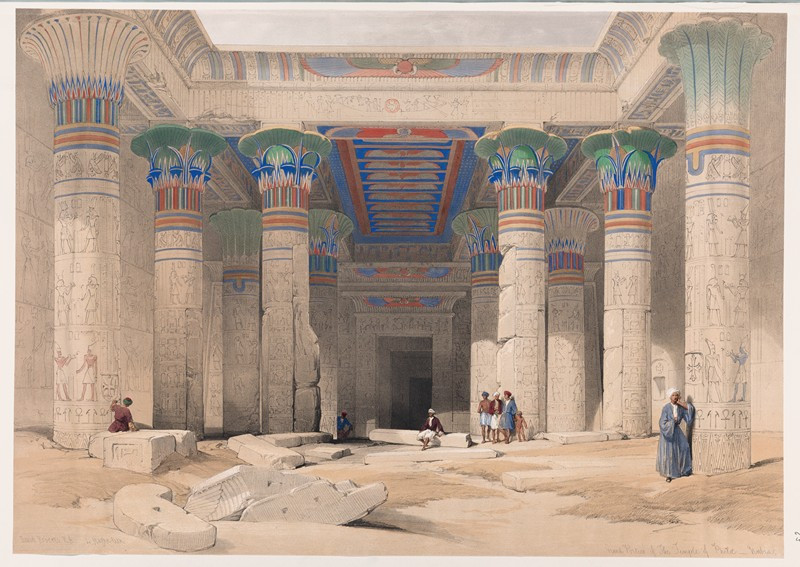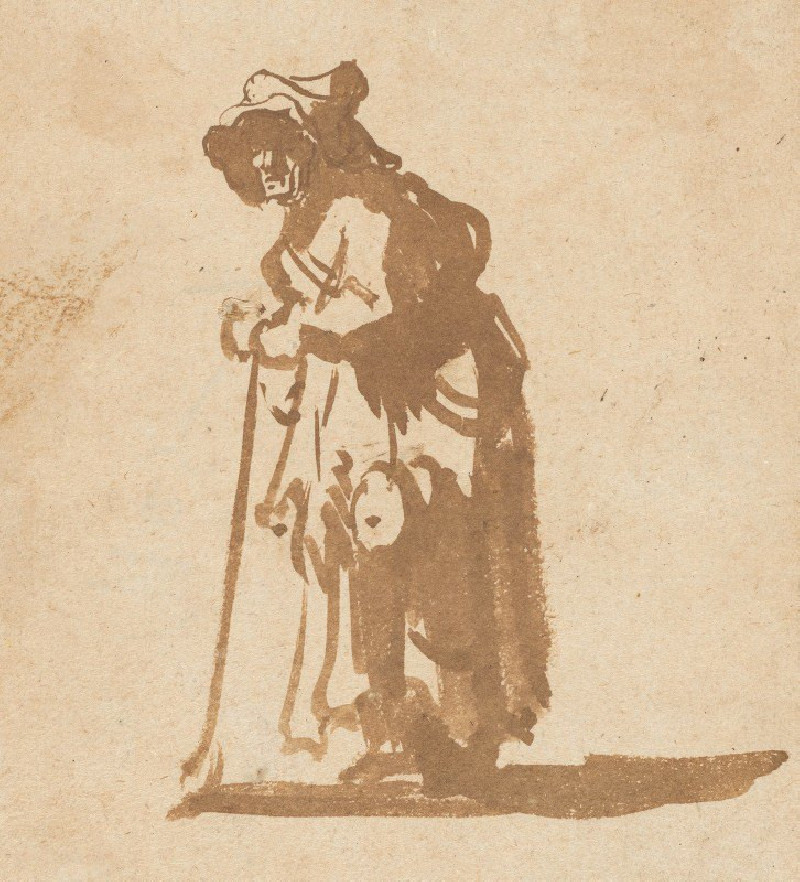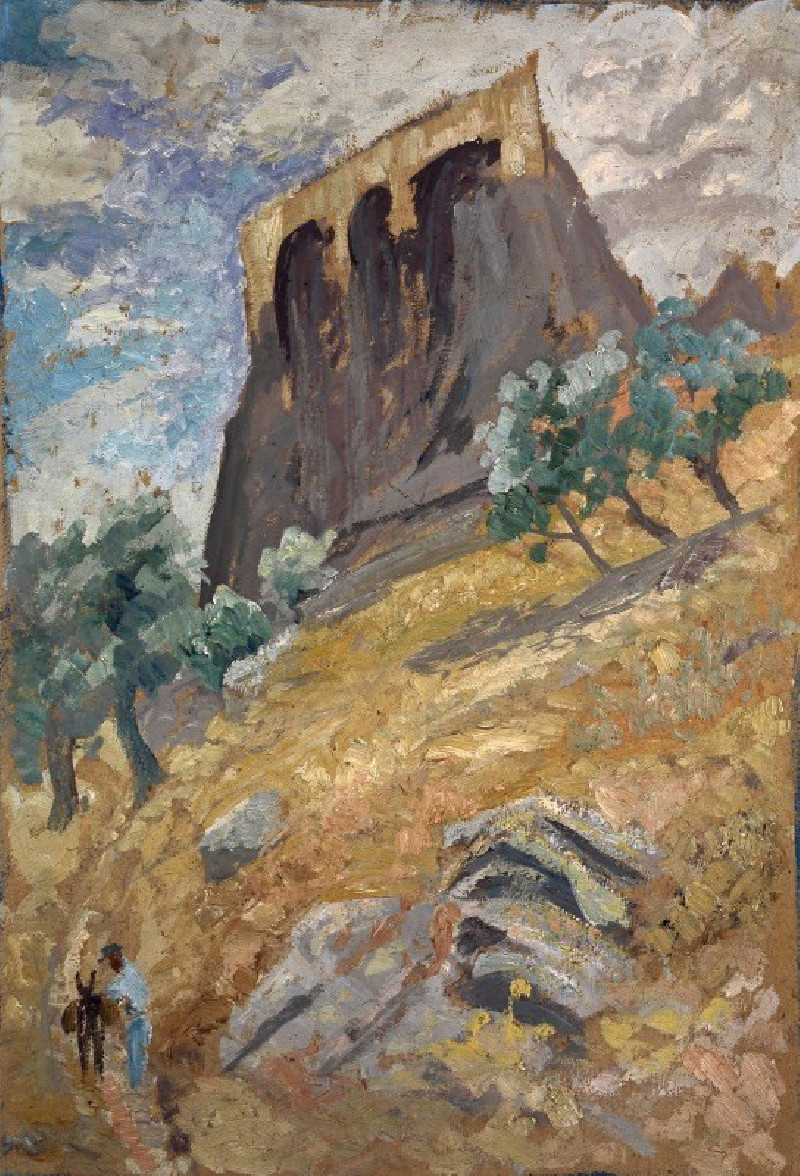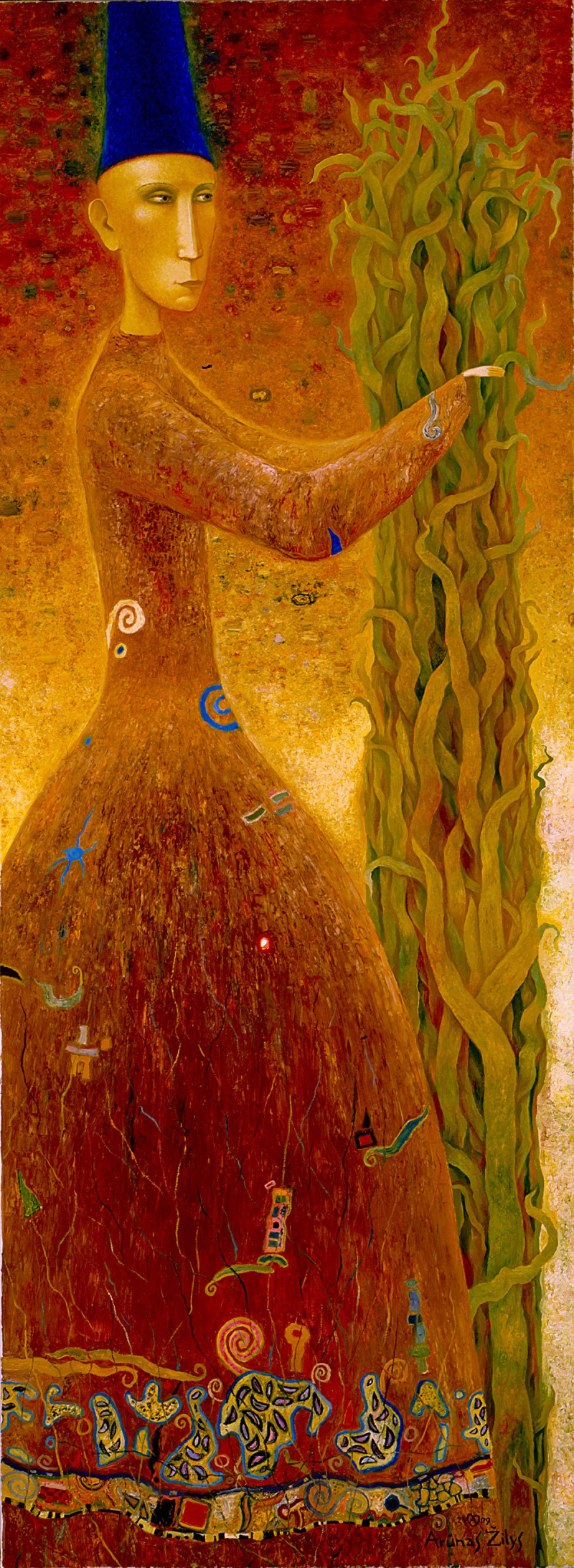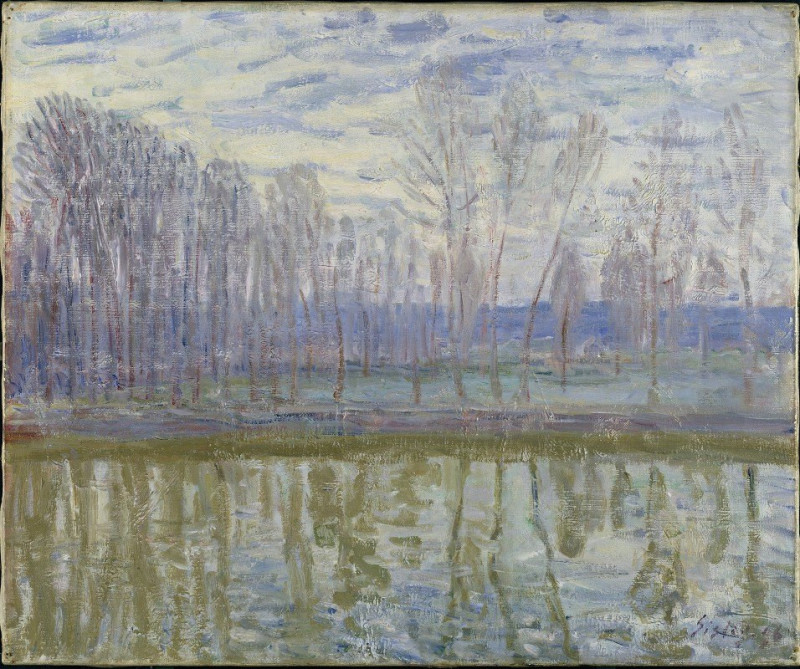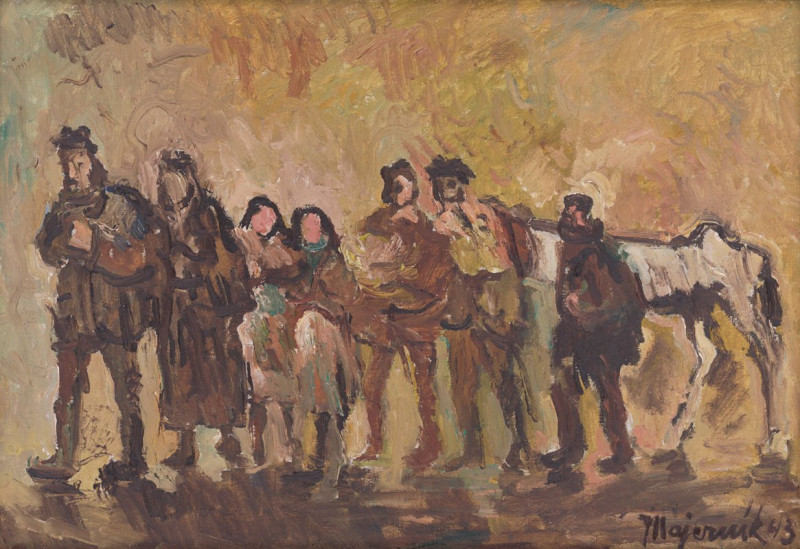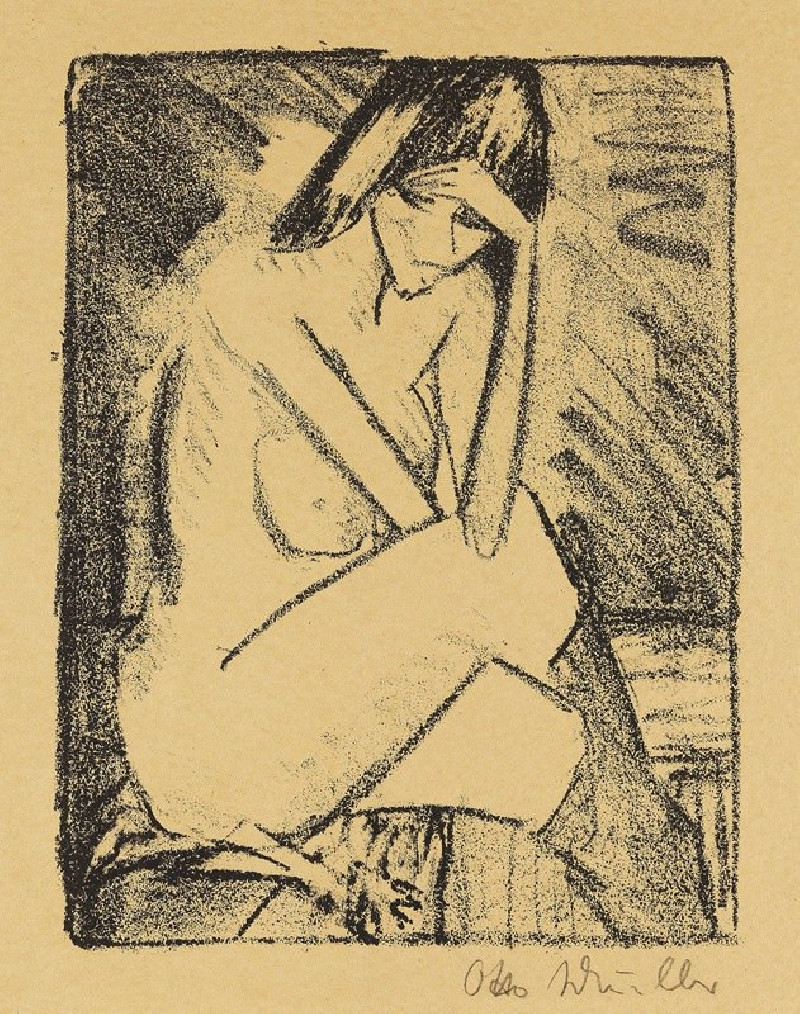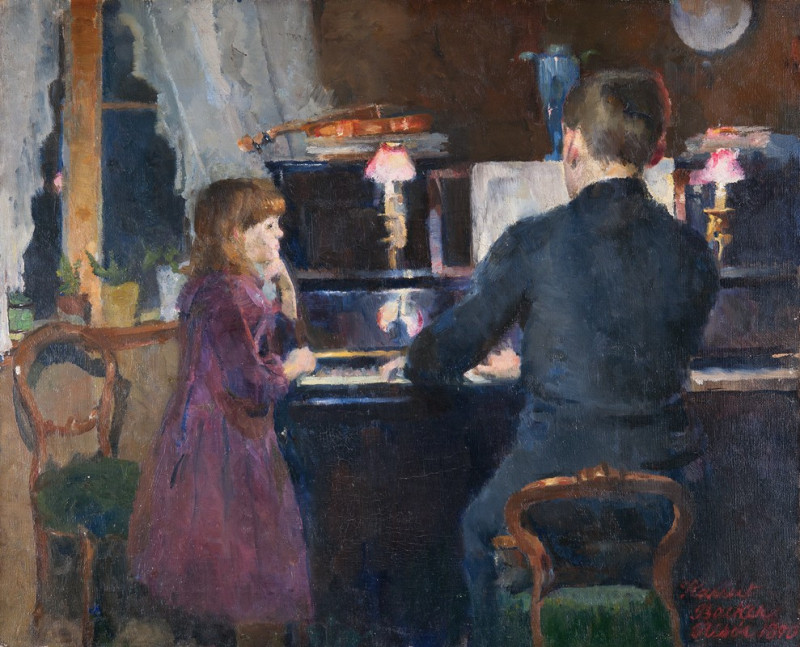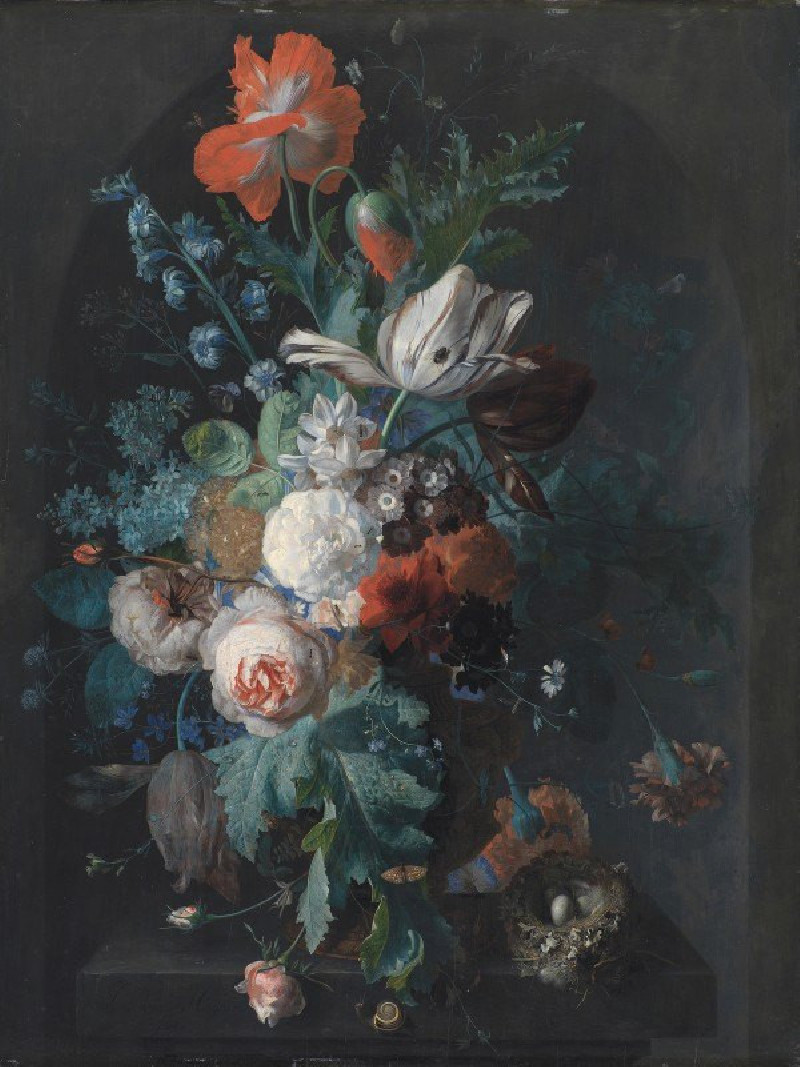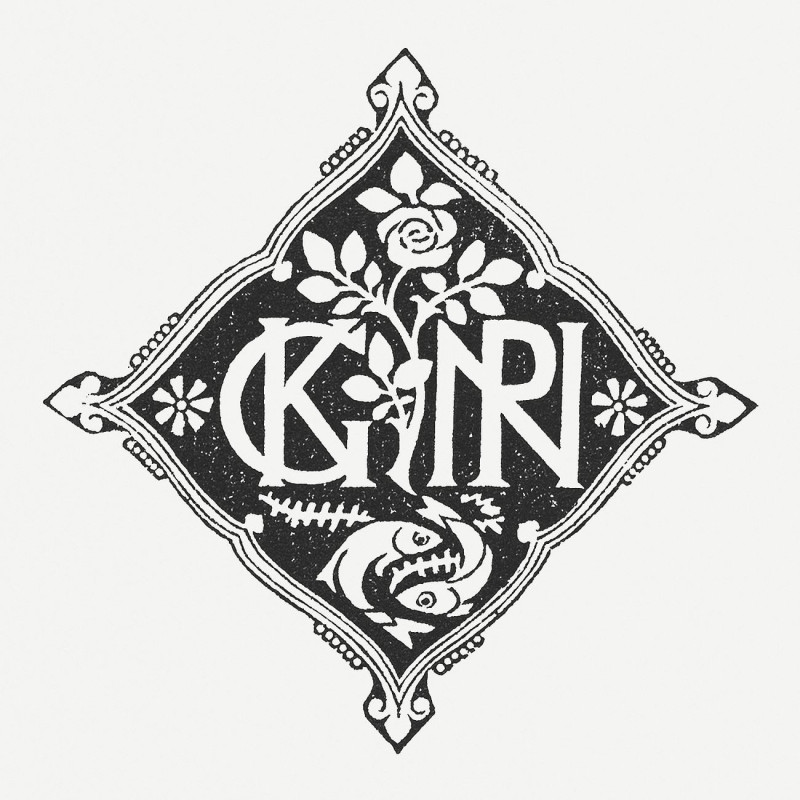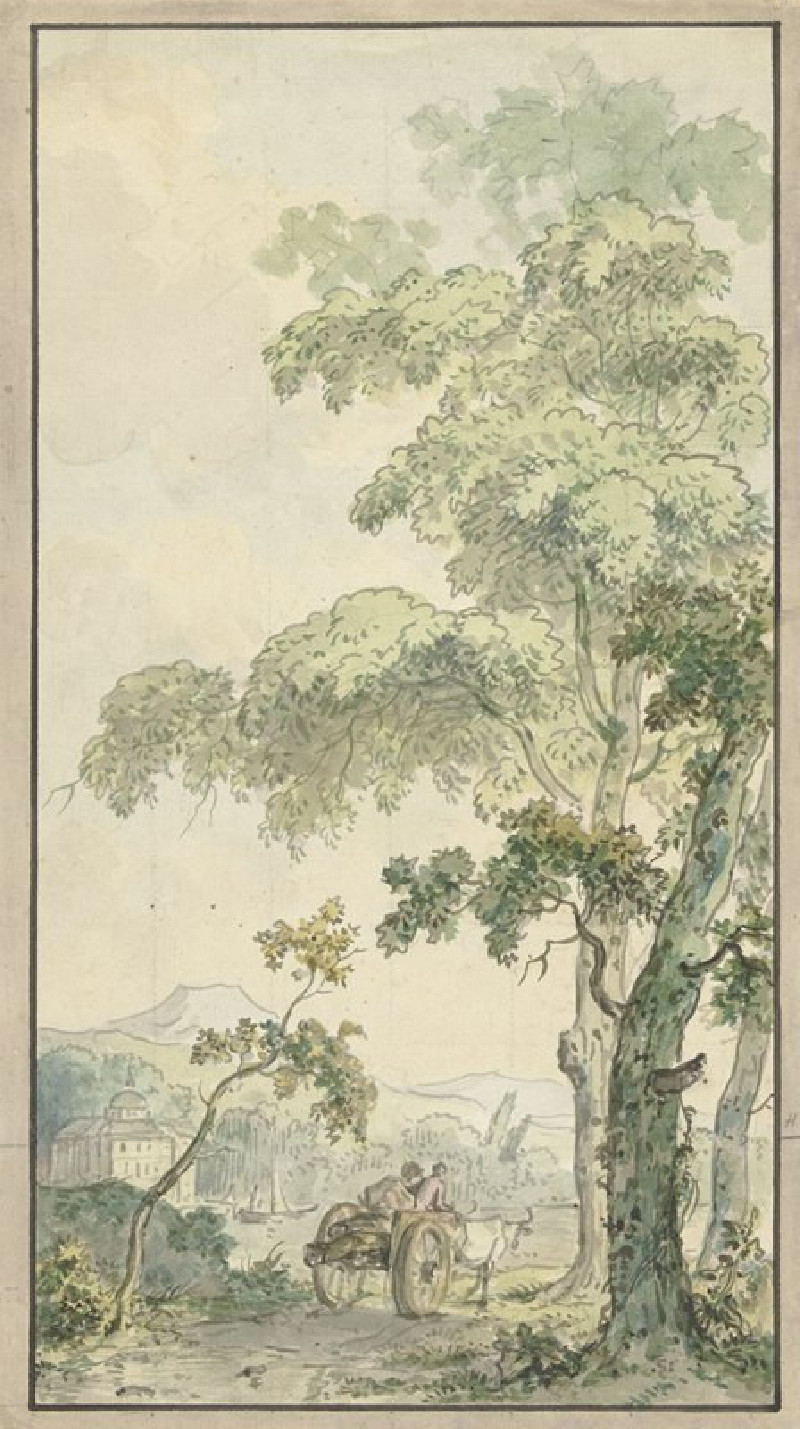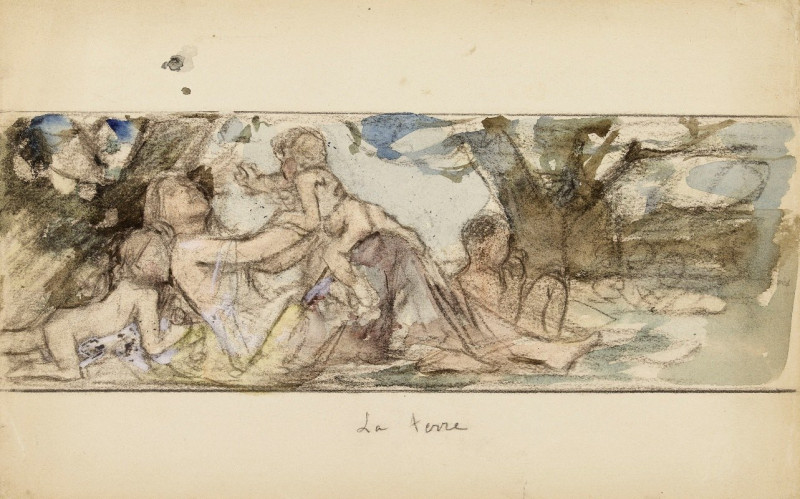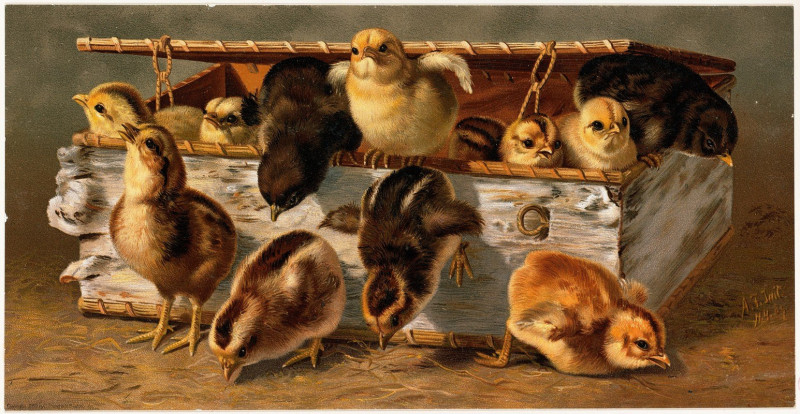Rokoko (1912)
Technique: Giclée quality print
Recommended by our customers
More about this artwork
Welcome to an enchanting glimpse into August Macke’s "Rokoko," a vivid painting that transports viewers to a lively, color-rich landscape that epitomizes the Rococo style’s joyous and playful spirit. Created in 1912, this artwork is a beautiful example of Macke's unique blend of color, light, and form which intimately connects with the observer.In "Rokoko," Macke illustrates an idyllic scene set in a lush garden. The composition features three distinct figures: two elegantly dressed individuals, a man and a woman, stand on a balcony adorned with classical architecture, and another man is depicted off to the side, immersed in his reading beneath the shade of vibrant trees. The interplay of light and shade, created through bold, expressive colors, brings the scene to life, suggesting a moment of leisure and interaction in a serene, ornate garden.The earthy browns and soft greens of the trees and foliage contrast beautifully with the hints of bright yellows, reds, and blues in the figures' attire, echoing the extravagance and playfulness of the Rococo period. The architectural elements with their smooth, rounded arches add a sense of harmony and order to the scene, anchoring the dynamic swirls of color.Macke's painting is a dialogue between color and form, where the ordinary becomes extraordinary through his artistic vision. "Rokoko" is not just a visual treat; it's a reminder of the simple pleasures of nature, art, and companionship.
Delivery
Returns
August Macke (3 January 1887 – 26 September 1914) was a German Expressionist painter. He was one of the leading members of the German Expressionist group Der Blaue Reiter (The Blue Rider). He lived during a particularly innovative time for German art: he saw the development of the main German Expressionist movements as well as the arrival of the successive avant-garde movements which were forming in the rest of Europe. Like a true artist of his time, Macke knew how to integrate into his painting the elements of the avant-garde which most interested him.


